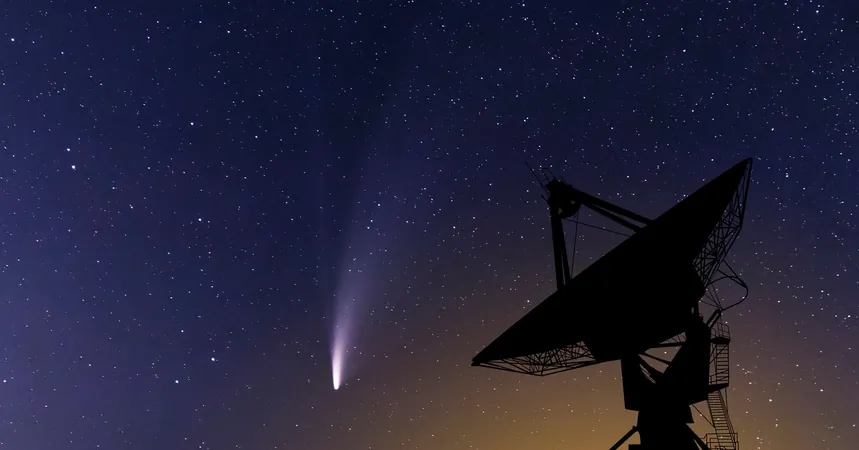
Get Ready! The Brightest Comet of 2025 is Approaching: Here’s How You Can Catch a Glimpse
2025-01-11
Author: Sarah
Introduction
As we savor the cosmic fireworks of the Quadrantids meteor shower, another celestial wonder is on the horizon: Comet Atlas C/2024 G3. This fascinating comet is set to reach its perihelion—the closest point to the sun—on January 13, 2025, coinciding with its closest approach to Earth. Astronomers predict it could be the brightest comet of the year, a rare treat given that no other significant comets are anticipated to grace our skies with their presence.
About Comet Atlas C/2024 G3
Discovered on April 5, 2024, by the Asteroid Terrestrial-Impact Last Alert System (Atlas), this comet hails from the mysterious Oort Cloud—a vast region of icy bodies lurking at the outer edges of our solar system. This primordial cloud is believed to house remnants from the very formation of our solar system's planets, making C/2024 G3 a fascinating object for study.
Trajectory and Brightness
On its journey toward the sun, C/2024 G3 will come within approximately 13.5 million kilometers of our star. To put this into perspective, Mercury, our solar system's innermost planet, orbits the sun at a distance of 47 million kilometers. With its anticipated brightness reaching an astonishing magnitude of -4.5, comparable to that of Venus, observers in the southern hemisphere might enjoy a dazzling view.
Survival Concerns
However, the comet's close brush with the sun does raise concerns about its survival. Experts believe that C/2024 G3 might be an old comet that has survived previous encounters with our solar system's fiery center. Its last approach occurred roughly 160,000 years ago, and as Nick James of the British Astronomical Association warns, 'It will be very heated and may not survive. But if it does, it could be an extraordinary sight in the evening sky for those in the southern hemisphere post-perihelion.'
How to Spot C/2024 G3
For those keen on experiencing this celestial phenomenon, mark your calendars for January 13! Should the comet survive its close encounter, it will be visible on that evening to the west shortly after sunset. Unfortunately, those in the northern hemisphere may find it challenging to view; low positioning in the sky at dusk or dawn may obscure it against the brightening twilight.
Due to its proximity to the sun, astronomers advise only seasoned observers to attempt visualization, as viewing it directly could prove perilous without appropriate eye protection. Moreover, the moon will be in its waning phases, possibly complicating clear sighting.
Those eager to witness the spectacle firsthand are encouraged to equip themselves with binoculars or a telescope for optimal viewing. Alternatively, curious stargazers can track C/2024 G3 through live images provided by the Solar and Heliospheric Observatory’s Lasco C3 coronagraph, or they can consult resources such as the IAU Minor Planet Center or the Comet Observation (COBS) database to stay updated.
Conclusion
Don’t miss your chance to catch one of the most exciting astronomical events of 2025! Prepare for an enthralling ride through the cosmos as Comet Atlas C/2024 G3 makes its spectacular appearance. Will you be among the lucky observers?


 Brasil (PT)
Brasil (PT)
 Canada (EN)
Canada (EN)
 Chile (ES)
Chile (ES)
 Česko (CS)
Česko (CS)
 대한민국 (KO)
대한민국 (KO)
 España (ES)
España (ES)
 France (FR)
France (FR)
 Hong Kong (EN)
Hong Kong (EN)
 Italia (IT)
Italia (IT)
 日本 (JA)
日本 (JA)
 Magyarország (HU)
Magyarország (HU)
 Norge (NO)
Norge (NO)
 Polska (PL)
Polska (PL)
 Schweiz (DE)
Schweiz (DE)
 Singapore (EN)
Singapore (EN)
 Sverige (SV)
Sverige (SV)
 Suomi (FI)
Suomi (FI)
 Türkiye (TR)
Türkiye (TR)
 الإمارات العربية المتحدة (AR)
الإمارات العربية المتحدة (AR)